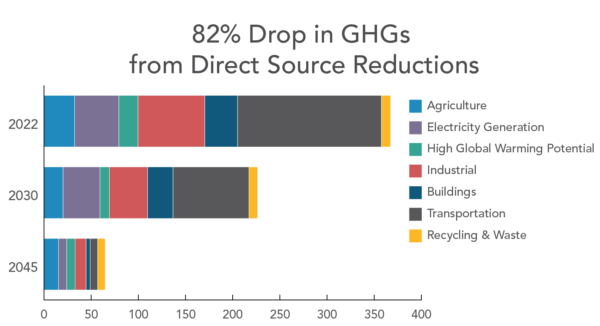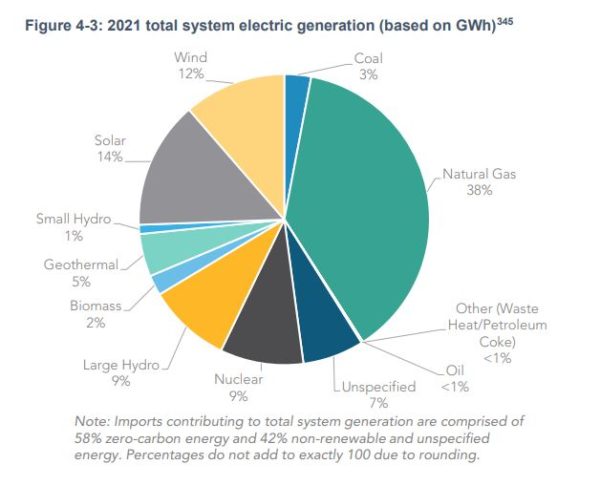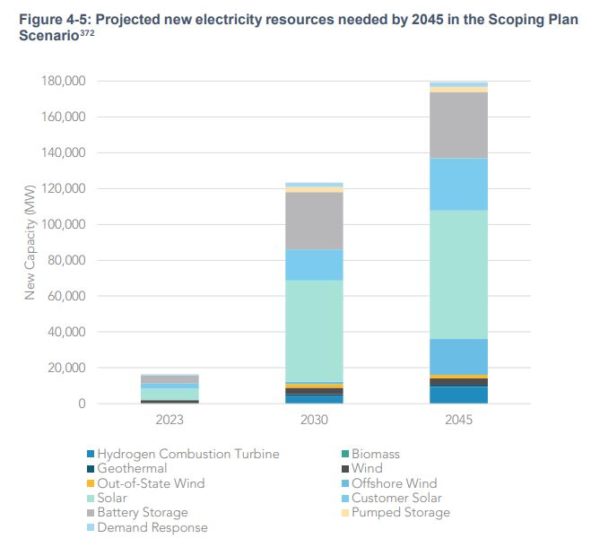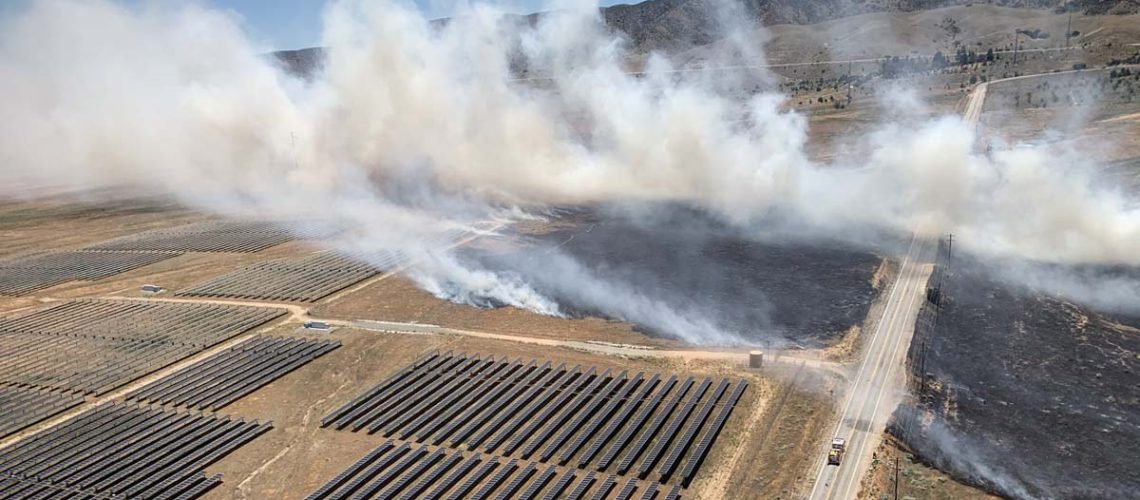The California Air Resources Board released its most aggressive climate plan to date, targeting net-zero by 2045 or earlier, and creating 4 million jobs along the way.
The California Air Resources Board (CARB), a state agency vested with the power to regulate air pollution released its Scoping Plan, setting the marching orders for the state’s path to net-zero emissions. It is among the most aggressive climate plans in the world, making drastic changes to a state that would represent the fourth-largest economy in the world if it were a sovereign nation.
By 2045, the plan’s benefits include cutting greenhouse gas emissions by 85% below 1990 levels, a 71% reduction in smog-forming air pollution, the reduction of fossil fuel consumption (liquid petroleum) to less than one-tenth of what is used today a 94% reduction in demand. The 2045 plan is expected to create 4 million new jobs and save Californians an estimated $200 billion in health costs due to pollution.
“This plan clearly and unequivocally presents challenging and ambitious goals, but we simply have no other choice but to meet them – and do it in less than a quarter century,” said Liane Randolph, CARB chair. “We all have experienced firsthand the impacts of climate change, whether wildfires, drought, record-breaking heat waves and more. Failure is not an option.”
The new plan includes a 48% reduction of greenhouse gases by 2030, surpassing the statutory mandate to reduce emissions 40% below 1990 levels in 2030. The plan also calls for no new fossil gas capacity in the electricity sector; reducing the electricity sector’s greenhouse gas emissions by 30 million metric tons by 2030. It targets at least 20 GW offshore wind capacity built by 2045; 3 million climate-friendly homes by 2030 and 7 million by 2035; and 6 million heat pumps deployed by 2030. To achieve a carbon neutral goal by 2045, the plan expands reliance on carbon capture, which many environmental groups criticize as expensive, unproven technology that risks extending the life of fossil fuel plants.

The scoping report relies on Senate Bill 100, which revised California’s Renewable Portfolio Standard ensure that by 2030 at least 60 percent of California’s electricity is renewable. Deployment rates will need to be raised considerably to reach this target.
Energy efficiency moderates some of the need for additional electricity generation. However, that mitigation is quickly surpassed by growing electricity demand of 26% by 2030 and 76% by 2045. CARB said the estimated resource build needed to meet this level of demand amounts to approximately 72 GW of utility-scale solar and 37 GW of battery storage by 2045. Annual build rates (over the 2022–2035 period) for the Scoping Plan Scenario will need to increase by about 60% and over 700% for utility solar and battery storage, respectively, compared to historic maximum rates.

The plan also places emphasis on distributed energy to mitigate the challenges of climate-related disasters. “Heat, drought, and wildfires can both reduce electricity supply from reductions in hydropower generation and impacts on generation and transmission performance, and increase demand, especially in the evening hours when solar generation is declining,” said the report.
As a result, distributed solar energy paired with storage is recommended by CARB. California has been placing a lot of focus on energy storage, with 3.5 GW of lithium-ion batteries added to the grid since 2020.

CARB said it is in support of an emphasis on rooftop solar and distributed technologies like microgrids. However, while CARB can regulate emissions, it is not able to direct the regulatory and incentive structure for non-emitting energy sources. This lies under the purview of the California Public Utilities Commission (CPUC), which has demonstrated an affinity for centralized power built by investor-owned utilities.
“At a time when California is facing severe wildfires, droughts and other extreme weather-related disasters, our state’s leadership on addressing climate change – as we’re poised to become the world’s fourth largest economy – is important now more than ever. CARB’s new plan for global warming pollution reduction takes critical steps to accelerate the path to 100% clean energy that will ensure a healthier, safer and cleaner future here in the Golden State and beyond,” said Laura Deehan, Environment California state director.



